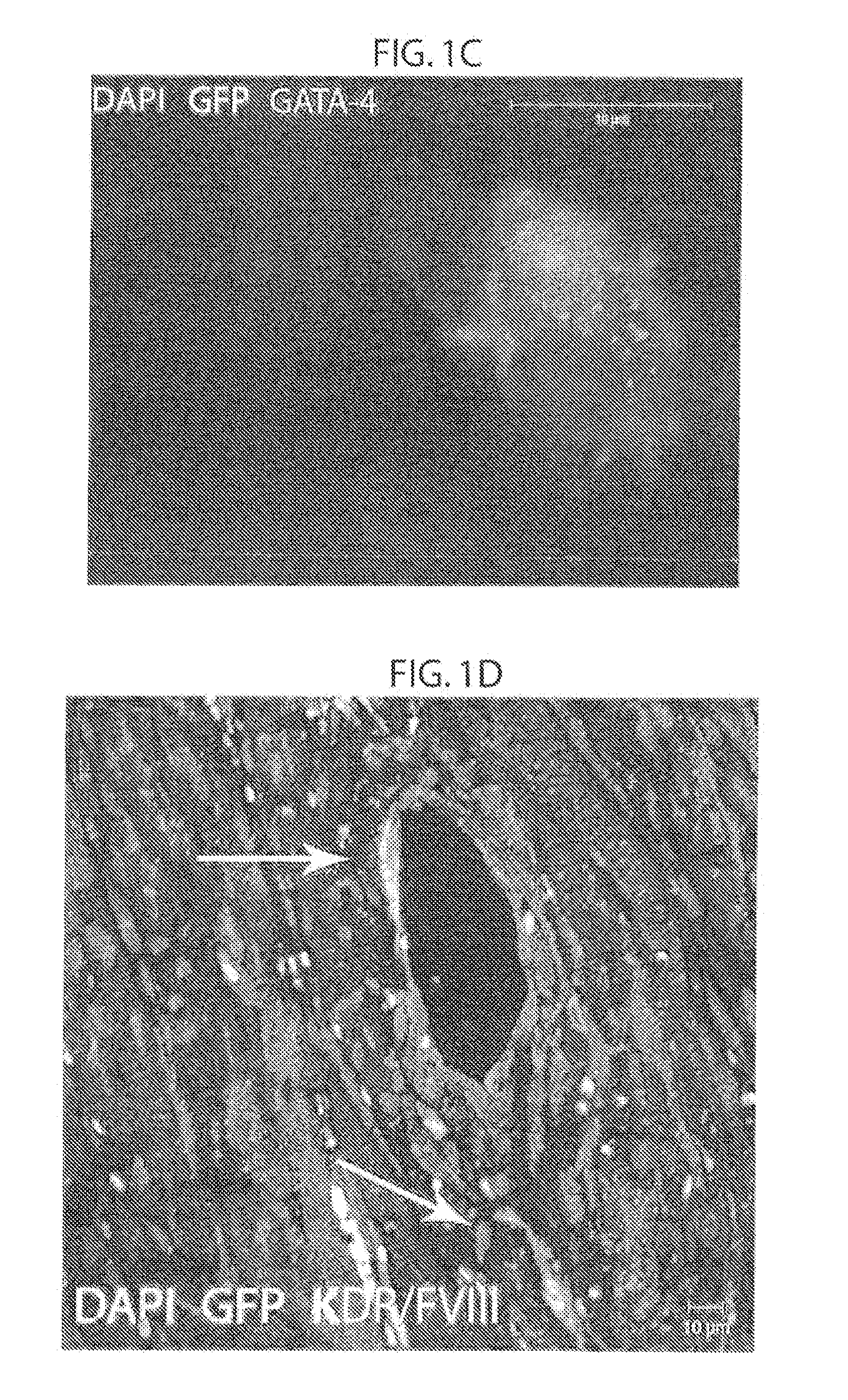Method to amplify cardiac stem cells in vitro and in vivo
a stem cell and cardiac stem cell technology, applied in the field of stem cell compositions and methods of tissue repair, can solve the problems of insufficient clinical evidence of cellular engraftment, inability of cardiac stem cells to differentiate into cellular elements comprising the heart, and the use of cardiac stem cells to treat patients, etc., to achieve the effect of stimulating the proliferation of cardiac stem cells
- Summary
- Abstract
- Description
- Claims
- Application Information
AI Technical Summary
Benefits of technology
Problems solved by technology
Method used
Image
Examples
example 1
Mesenchymal Stem Cells Regenerate Cardiac Muscle, Vasculature and Stem Cell Niches
[0184]In order to determine whether mesenchymal stem cells have cardiac precursor potential or whether their therapeutic effect is exerted through paracrine effects, GFP labeled male allogeneic adult bone marrow derived mesenchymal stem cells (αMSCs) were injected into female pigs following myocardial infarction (MI) (FIG. 5). Without wishing to be bound by theory, it was hypothesized that allogeneic adult bone marrow derived mesenchymal stem cells (αMSCs) are true adult precursor cells which can differentiate into the three cardiac cell lineages, and that αMSCs participate in cardiac recovery by forming cell-cell interactions with existing myocardial elements including with endogenous precursor cells.
[0185]First the fate of allogeneic GFP, Y-chromosome positive αMSCs injected directly into the myocardium via an endocardial catheter in pigs 3-days following myocardial infarction (MI), was examined. Aft...
example 2
Bone Marrow Mesenchymal Stem Cells Stimulate Cardiac Stem Cell Proliferation and Differentiation
Methods
[0194]This study was reviewed and approved by the University of Miami Institutional Animal Care and Use Committee and complies with all Federal and State guidelines concerning the use of animals in research and teaching as defined by The Guide For the Care and Use of Laboratory Animals (NIH Pub. No. 80-23, revised 1985).
[0195]Mesenchymal Stem Cell Isolation, Harvest and Labeling:
[0196]Swine MSCs were isolated and expanded from a single, healthy male Yorkshire donor as previously described. Briefly, bone marrow was obtained from the iliac crest, and aspirates were passed through a density gradient to eliminate undesired cell types and were plated with 25 ml MEM Alpha media (Mediatech, Manassas, Va.) containing 20% fetal Bovine Serum (Hyclone, Logan, Utah) in 162 cm2 culture flasks (Fisher Scientific, Pittsburgh, Pa.). At 5-7 days after plating, non-adherent cells were washed away du...
PUM
 Login to View More
Login to View More Abstract
Description
Claims
Application Information
 Login to View More
Login to View More - R&D
- Intellectual Property
- Life Sciences
- Materials
- Tech Scout
- Unparalleled Data Quality
- Higher Quality Content
- 60% Fewer Hallucinations
Browse by: Latest US Patents, China's latest patents, Technical Efficacy Thesaurus, Application Domain, Technology Topic, Popular Technical Reports.
© 2025 PatSnap. All rights reserved.Legal|Privacy policy|Modern Slavery Act Transparency Statement|Sitemap|About US| Contact US: help@patsnap.com



